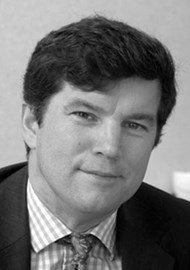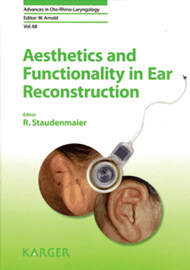Recent years have brought important refinements to the approach and techniques of functional and aesthetic ear reconstruction.
Aesthetics and Functionality in Ear Reconstruction by R Staudenmaier is an excellent book providing concise but detailed overview on the state of the art in restoration of hearing and aesthetic recreation of the auricule.
The book is divided into eight chapters. The book begins with a historical overview on auricular reconstruction as mutilations of parts of the ear as a consequence of war or punishment have been known throughout human history. This chapter contains very clear graphs of the approaches used by our forefathers such as Sushruta Samita (India 600BC pedicled cheek flap), Tagliacozzi (16th century), Pierce (tubed flaps in 1925), Gilles (composite grafts 1935), Newman (tissue expansion 1957) and Fox and Edgerton (temporoparietal flap 1976). After 1950 modern techniques of auricular reconstruction began to develop through Tanzer’s IV-stage concept in microtia using autologeous rib cartilage. His technique was further modified by Brent, Nagata and Firmin.
State-of-the-art autogenous ear reconstruction in microtia is very well described by Firmin. In these cases surgeons must reconstruct complex missing contours, which necessitate the use of a support and skin remnants to cover this support. She presents refinements in sculpturing three-dimensional architecture of the external ear cartilage, recent improvements concerning the framework and skin approaches (type 1 to 3 incisions). These approaches were well supported by clinical examples which demonstrate the process of choosing the best skin approach in microtia cases.
Berghouse et al present technical refinements of polyethylene implants. He describes disadvantages of rib cartilage frameworks supported by his experience in using porous polyethylene as a frame material. His experience and technique is presented in a great detail supported by medical photographs.
Auricular prosthesis is another example of the armamentarium of options for auricular reconstruction. A brief history of craniofacial prosthetics, methods of retention, solitary and grouped implant system as well as surgical technique are presented and supported by results shown in medical photographs.
The success of recreating a functioning and aesthetically pleasing ear lies in a multidisciplinary approach. Reconstruction of a malformed middle ear with atresia is a challenging undertaking. Kiefer and Staudenmaier’s chapter provides an excellent overview on careful approach and indications to operations improving hearing ability by building up the external auditory canal and middle ear. Active middle ear implants developed for treating sensorineural hearing loss have been successfully used. Implanting a hearing aid into the external auditory canal or performing ossiculoplasty when possible allows preserving local and regional tissues for external ear reconstructions.
Current advances in tissue engineering may form the fundamentals and potential in reconstructive surgery of the auricule. The last chapters provide a brief overview of tissue regeneration, cartilage engineering, three-dimensional framework design and in vivo characteristics. The authors present a balanced view on the perspectives and limitations preventing its current clinical applications. In summary, the book concentrates on several different aspects of ear reconstruction in severe malformations providing a complete, accessible overview on history, state of the art and future developments.





